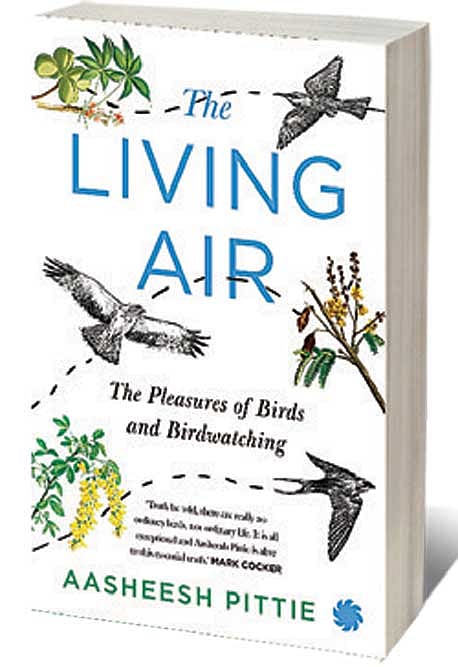Flights of Joy

IT’S EASY TO imagine a little bird sitting pretty on its perch amid the foliage, calling out, and then watching your struggles to spot it. In the next moment, its fervent incantation rises steadily giving you hope, though it’s perhaps only beckoning its mates to come watch the fun.
Anyone who’s tried spotting a bird will relate to this. Ask Aasheesh Pittie, who’s been a victim of this avian mirth for over four decades now. But instead of walking away, he’s realised just what it takes—an abundance of patience, perseverance and poise, at times, sitting easy under a relentless sun, watching and waiting. And on other occasions, simply making the effort to track down the melody to its source.
These qualities have made him a student of ornithology and an admirer of birds. For Pittie, the thrill of the chase may be overrated. It’s more about stepping out to behold what the day has in store for you amid nature’s many charms.
In the book, The Living Air: The Pleasure of Birds and Birdwatching, he tells you just why spotting birds is worth your time. Pittie’s tryst with birding started as a child through posters and stickers, followed by more erudite pursuits of devouring newsletters and books. It was an era far from the madness of technology, when he would spend hours watching birds and recording his observations in a notebook. Those early days served him well, as he learned to be invisible to birds rather than an anomaly in their habitat.
2026 New Year Issue
Essays by Shashi Tharoor, Sumana Roy, Ram Madhav, Swapan Dasgupta, Carlo Pizzati, Manjari Chaturvedi, TCA Raghavan, Vinita Dawra Nangia, Rami Niranjan Desai, Shylashri Shankar, Roderick Matthews, Suvir Saran
For anyone who’s interested, birding starts outside the window, counting swallows and rose-ringed parakeets swaying on a jumble of cables. Or from the rooftop where the omnipresent black kites put on an acrobatic show, darting mid-air in pursuit of prey.
It was no different for Pittie and most of his encounters in the book come from his hometown of Hyderabad and its outskirts. Just ticking off species was never his pursuit. He was delighted in equal measure by setting out in search of the rarely spotted endangered, Jerdon’s courser, and by watching the house sparrows go about their daily routine in his backyard.
Long days spent in the field led to minute observations and the book is plush with these nuggets—from the shikra’s varied call during courtship in the summer months, to why the coppersmith barbet prefers to build its nest on the underside of a dead branch, to how the red-wattled lapwing playacts to distract a predator from its nest.
Birding has changed over the years like everything else. It can be an unremarkable activity for those seeking instant gains. And a nightmare for old-timers like Pittie, who often have to rub shoulders with the kind who come with long lists, big lenses and the perfect angle in mind. But his real concern is reserved for urbanisation, the loss of habitat and poaching that has affected bird populations around the country.
It’s apparent that Pittie has spent a lot of time on his perch, soaking in every subtle detail and idiosyncrasy of birds, from their colours to the way they move—not just in the air but also on ground—and their calls and migrations spread across seasons.
But while his writing is lucid and his descriptions vivid, the book misses his images, which are sure to be as enriching as his accounts. Then again, given his disdain for manic photography, it’s clear why he’s preferred the delightful illustrations of Sangeetha Kadur instead.
For the newbie, bird watching may not sound like an exciting activity. A cheep or two is certainly not half as thrilling as a roar in the wild. But take a walk, soak in the stillness and you may discover a thing or two that goes beyond just the birds.

